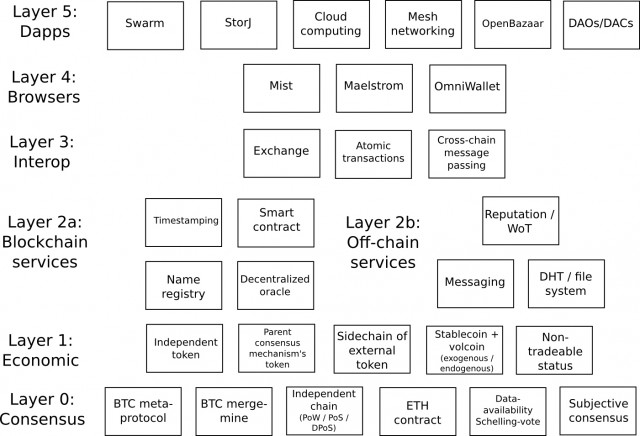I appreciate that Vitalik is always so kind to answer my non-technical, newbie questions, and what I value the most is that he takes the time to translate what he is going to tell me to layman’s terms, this was his short answer:
I really don’t like this “final networks that will prevail” concept.
Well, I like his sincerity too! :)
Here is what he said about different types of networks covering different types of needs and niches:
I think there are going to be plenty of networks with plenty of trade-off profiles. Particularly:
- Subjectivity / security trade-offs – Ripple is more secure theoretically, because even if it breaks the nodes can coordinate to revert it, but also much more heavily depends on trust.
- Scalability / security trade-offs – low transaction costs will for many dapps be mandatory, but in other cases you want absolute security with the full chain processing your transaction.
- Privacy / cost trade-offs – zerocash, ripple and everything in between.
- Safety / liveness trade-offs – do you want the network to be more likely to keep on going no matter what, or to be resistant and unexploitable by attackers no matter what?
Regarding Ripple (and I guess Stellar too because they are very similar) he says it occupies a specific space in the market, but it would be much more defensible if it had a Turing-complete programming language like Ethereum.
About Ethereum 1.0 and Bitcoin + Sidechains, they don’t satisfy the low cost, high scalability niche because of “every-node-processes-every-transaction” property, but his hope is Ethereum 2.0 will satisfy that need.
This is what he had to say about the nature of blockchain/network competition:
What will happen though is that I think networks will stop competing on features; the concept of “x is the network for decentralized exchange”, “y is the network for domain names”, etc will disappear, as turing-complete languages are just a much better way of handling those needs. But there will exist distinctions between different classes of needs.
As an analogy, he compared the different blockchain/network styles and their trade-offs with the hundreds of programming languages out there:
Think python / c++ / go / bash / ruby / haskell / browser javascript / nodejs. Programming languages are everywhere. But they are mostly not application-specific…
But this was the phrase that helped me picture the industry better:
[The different blockchain/networks] occupy different regions of the trade-off space.
This is, if you think of a chart with different quadrants, each with different qualities such as “subjectivity”, “scalability”, “security”, “privacy”, or other profiles, you could plot and map on the chart the different networks according to what they prioritized.
My conclusion:
At the bottom of the Crypto Application Stack (please see chart below), the consensus layer, there will be several blockchain/networks serving different niches according to their trade-off profile needs. As there are plenty of trade-off profiles there will be plenty of networks in the future.
The Crypto Application Stack:
